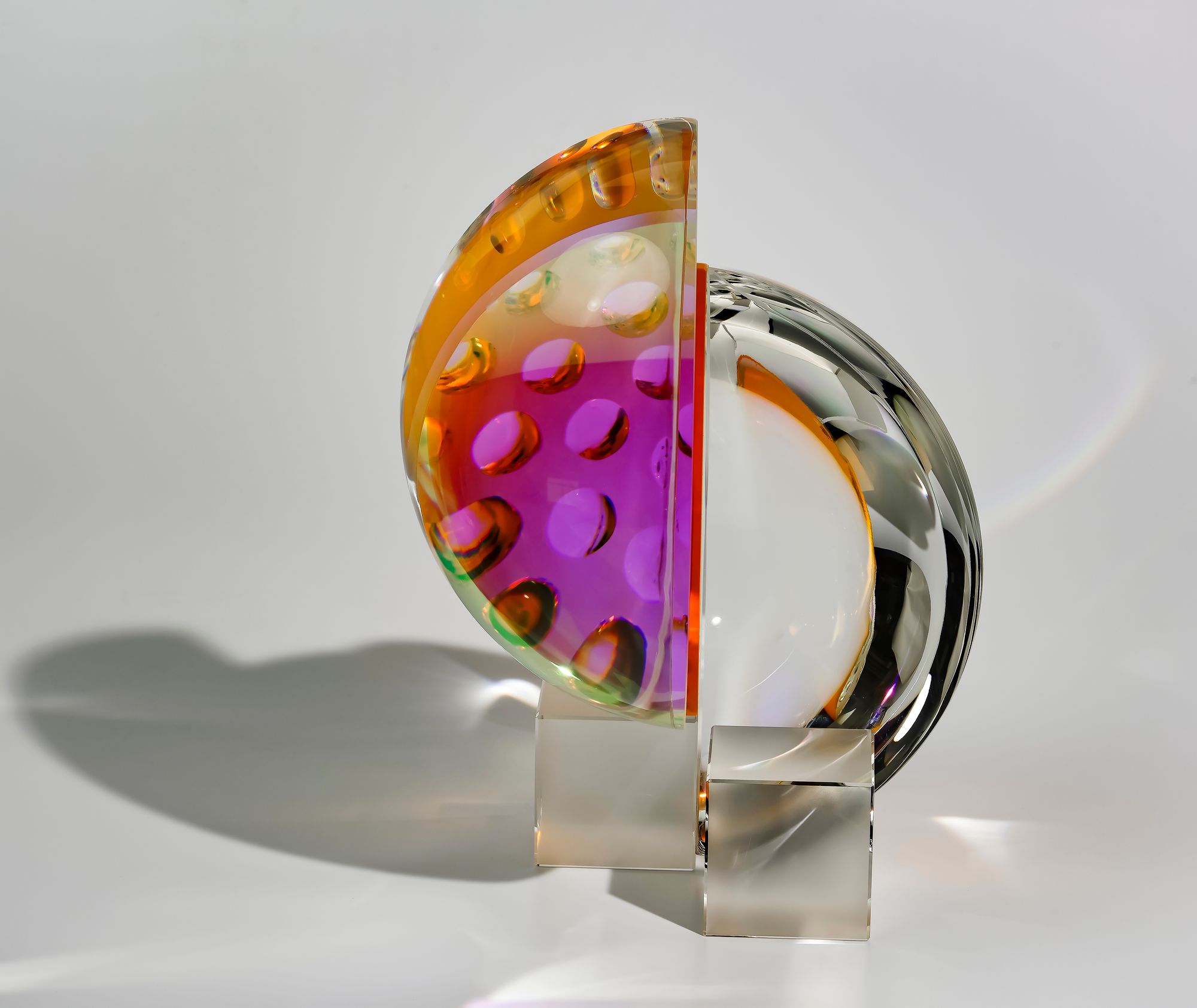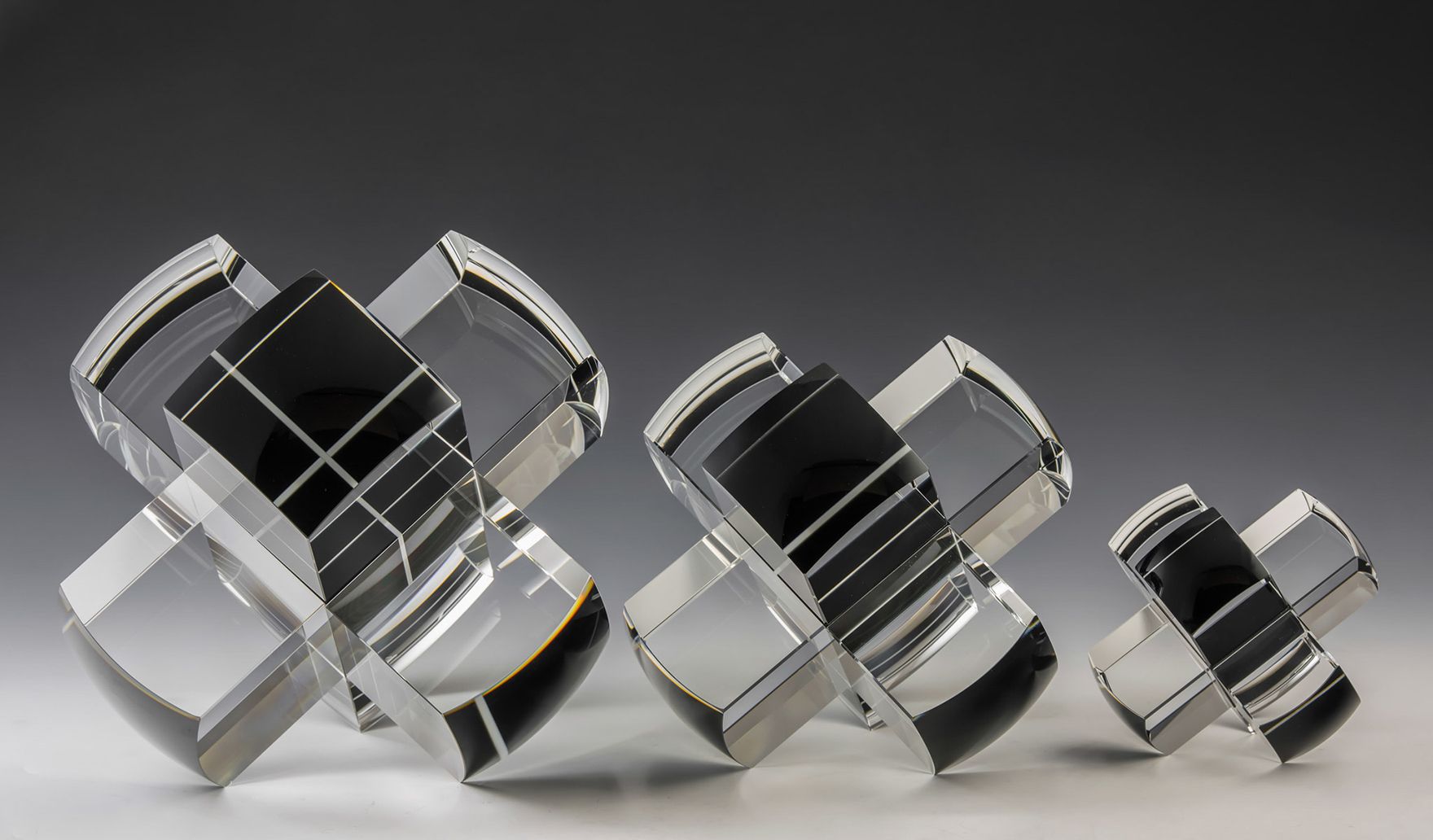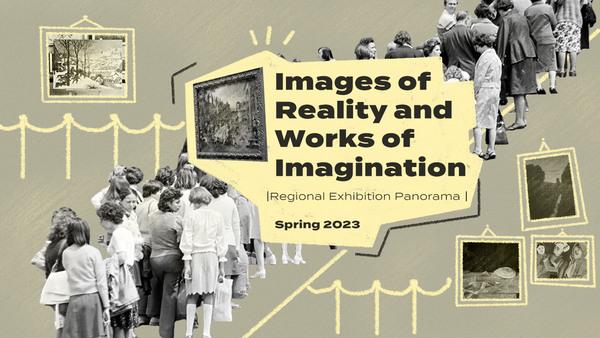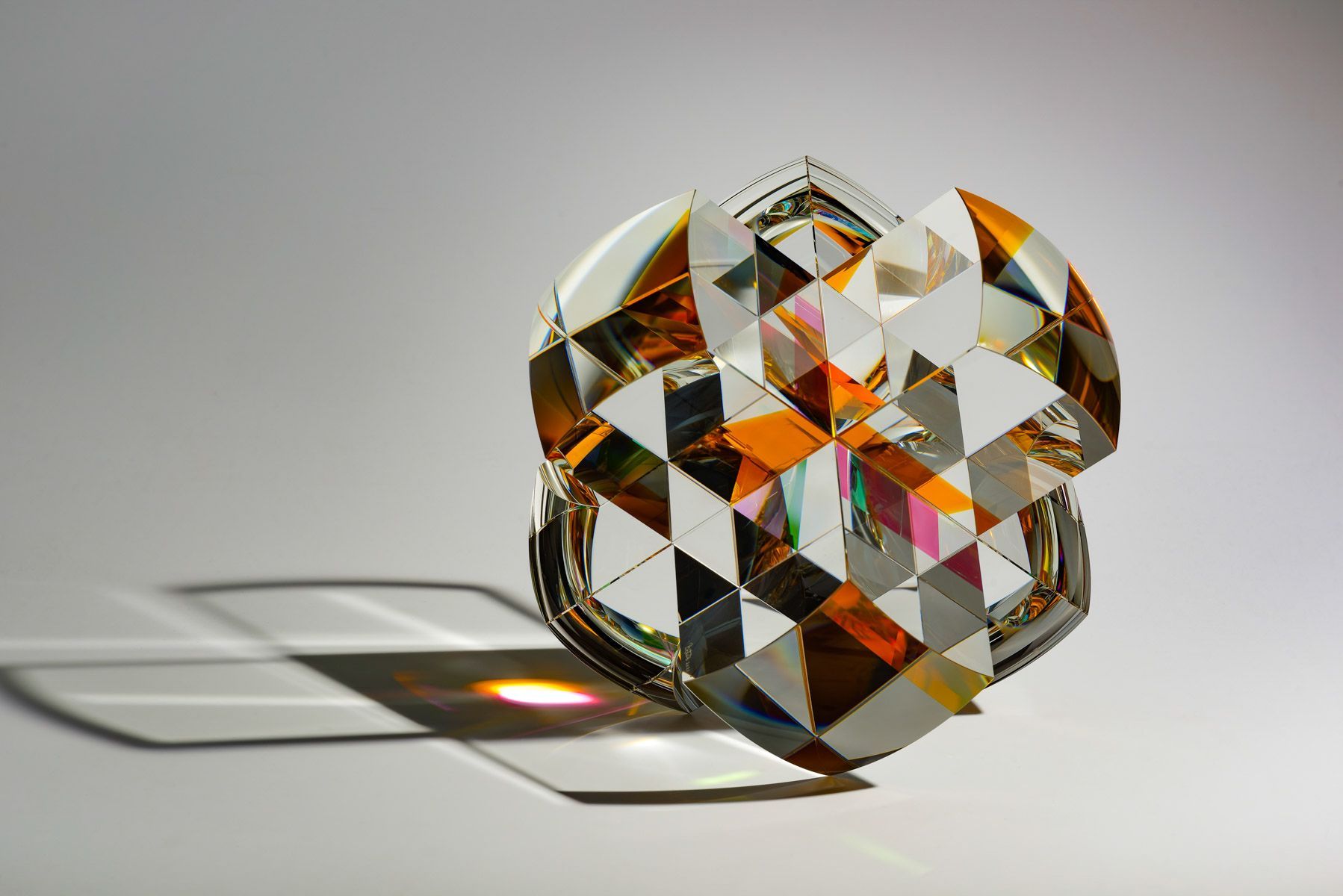Péter Botos is one of today’s most renowned glass sculptors, exhibiting regularly in China, the USA, Australia, and of course Europe.
Although he had his first solo exhibition, A Square Deal, in 2004 at the relatively late age of 59, we should not think that he was idle until then; his path to art was just a bit unusual. Despite having studied sociology at university, he became interested in minerals, crystals, and glass at an early age, and following long years of trying his wings at his home studio, he opened his workshop with friends in 1989. Initially, they manufactured glass elements for optical instruments and industrial tools, with the addition of trophy manufacturing as a sideline.

In these projects, they faced technical and formal challenges that greatly contributed to Péter’s later works. One of the distinctive qualities of his pieces lies in his ability to create different plays of light both inside and outside of his objects, as a result of his profound technical knowledge.
“For me, the use of optical glass means that the exterior and interior form, the reflections within the sculptures, the transitions, the colors, and the lights are equally important. I seek a balance of all these in my work. Lately, I have been interested in the relationship between directional light, my sculptures, and their environment. I use some of my sculptures as a lens and prism system beyond their usual appearance, partly influenced by László Moholy-Nagy’s Light-Space Modulator (1930) and partly by George Kepes’ work, to carry on his oeuvre,” Péter explained.


Péter’s art can best be classified as part of the geometric–abstract, and minimalist schools, with such prominent representatives in Hungary as Lajos Kassák, Victor Vasarely, or László Moholy-Nagy. Although the external form of his sculptures is reminiscent of simple, cold geometricism, the complexity of the internal structure and the play of light allow them to escape the static nature of structuralism, and through that, they seem to come to life.
Another interesting aspect of his work is that he uses a so-called cold finish, which means that he does not use the casting technique most commonly used in glass art. Instead, he uses diamond tools to work glass blocks, which involves cutting, grinding, polishing, and gluing.



Péter Botos’ sculptures are currently on display in several places: the Bálna in Budapest, the Zsdrál Design & Art Gallery in Balatonfüred, but also at the Red Moon Gallery in Melbourne. His latest project will arrive at the Light Art Museum in Budapest on 1 April, where he will project the light play of his sculptures set to motion for the public.

Images of reality and works of imagination | Regional exhibition overview | Spring 2023

Hollywood celebrities, Ukrainian war analysis, and regional films at the 2023 Berlinale










